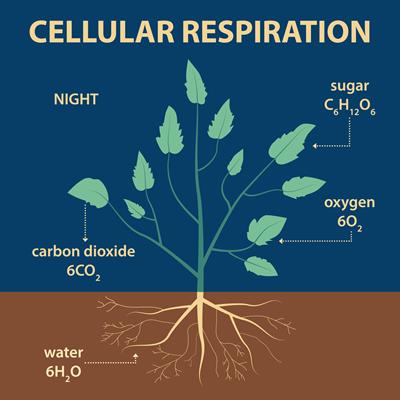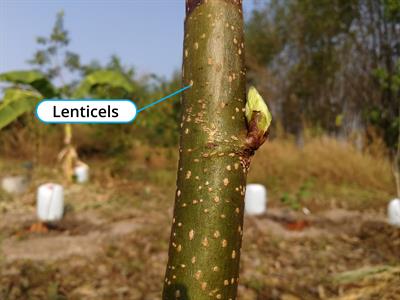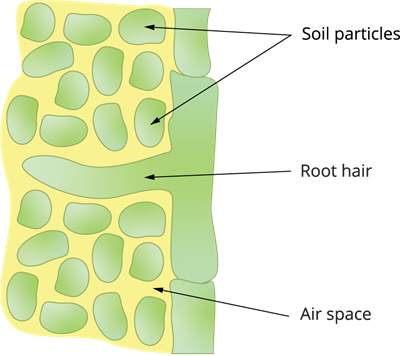PDF chapter test TRY NOW
Similar to other living organisms, the plants also respire. They take in oxygen from the air and give out carbon dioxide.
During the process of respiration, the oxygen is used to breakdown the glucose into carbon dioxide and water as in the animals.

In plants, all the parts respire independently by taking in oxygen and giving out carbon dioxide. The leaves of the plants contain tiny pores known as the stomata, which facilitate this gaseous exchange.
Lenticels:
In woody plants like trees lens-like structures known as lenticels aid in the process of respiration.

Lenticels
These lenticels are dead cells with large intercellular spaces. When compared to the stomata lenticels are less in number.
The loss of water from the plants through the lenticels is known as lenticular transpiration.
Respiration in roots:
The part of the plant that is found under the soil is known as roots.

The roots contain hair-like structures known as root hairs on them. These structures absorb the air present in the spaces between the particles of the soil.
Overwatering of plants?
As discussed, the roots of the plants obtain the oxygen from the air in the soil, which also contains some water or moisture. When the plants are overwatered, the spaces between the soil particles get clogged. Due to this, the roots will not get a sufficient amount of air leading to the death of the plant.
Reference:
https://www.askiitians.com/revision-notes/class-7-science/respiration-in-organisms/#
